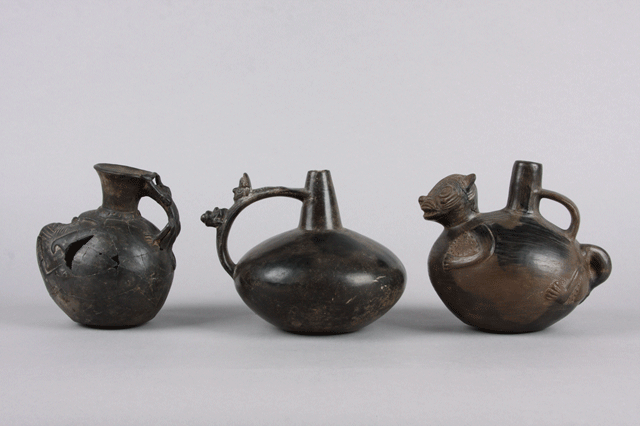
Photograph by B. Bernard

Photograph by B. Bernard
Until abstract art became popular in Western countries, it was typical to denigrate abstraction and mass production by non-western cultures such as those of ancient America. Because of the association of naturalism with "high civilizations," it was preferred over abstraction. Precolumbian cultures that employed naturalism (such as the Maya in Mesoamerica and the Moche in South America) became favorites in scholarship and in exhibitions.
The three pots shown below display various degrees of abstraction. They
indicate the value placed on simplified modeling, sometimes to the point
where it is not clear what is being represented. The first shows a
crouching jaguar fairly clearly, but the jaguar's body is no more than
the usual elliptical body for a jar. This example is 15 centimeters
(6 inches) tall.
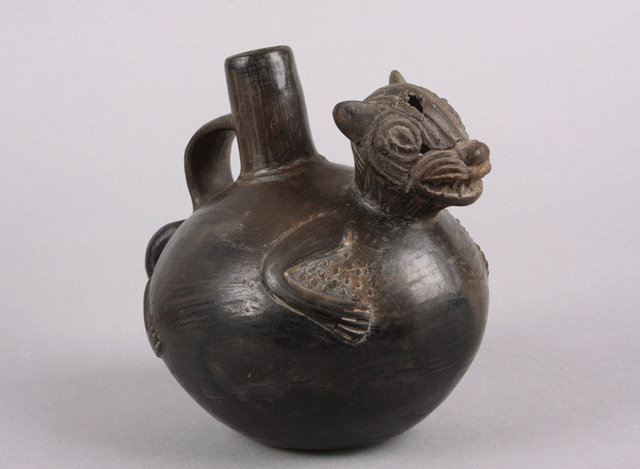
88.72.2, mold-made jar
Chimú-Inka period (A.D. 1470–1532)
Gift of Mr. and Mrs. Kenneth Rowland
The next pot has an animal on the handle, but is it a monkey or an iguana? The body of the pot is even more ambiguous. Looks from other angles don't help much. As the process of abstraction progresses, objects move away from the obvious and easily interpreted, toward arrangements that appeal directly to the viewer's aethetics. Although abstract art is considered a hallmark of the modern world, the process was invented and applied in multiple cultures, centuries before the art salons of Paris.

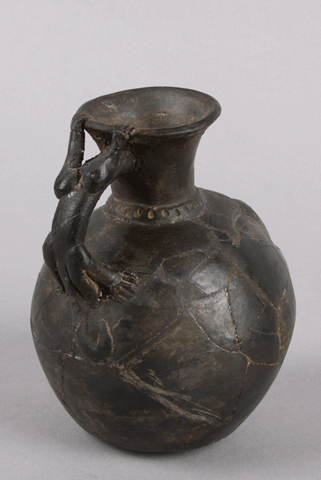
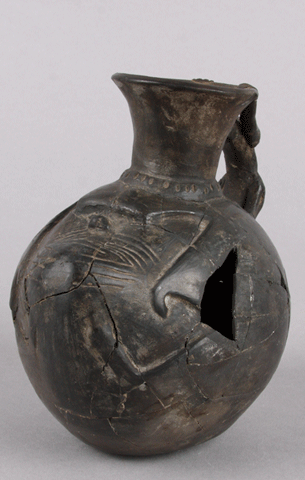
61.10.18, mold-made stirrup-spout jar
Late Chimú (A.D. 1350–1470) to Chimú-Inka
(A.D. 1470–1532) period
Hurd Collection of Peruvian pottery; gift of S. L. (Bud) Maisel
Photographs by B. Bernard
The pot shown above is 15 centimeters (6 inches) tall; the one shown
below is 14 1/2 centimeters (5 3/4 inches) tall. In the lower example
the process of abstraction is close to complete. Two human figures adorn
the handle but the aesthetic impact of the piece depends on its shape,
color, and polish. In a sense, abstraction has
come full circle, back to the elemental forms of many examples of
so-called "primitive" art.
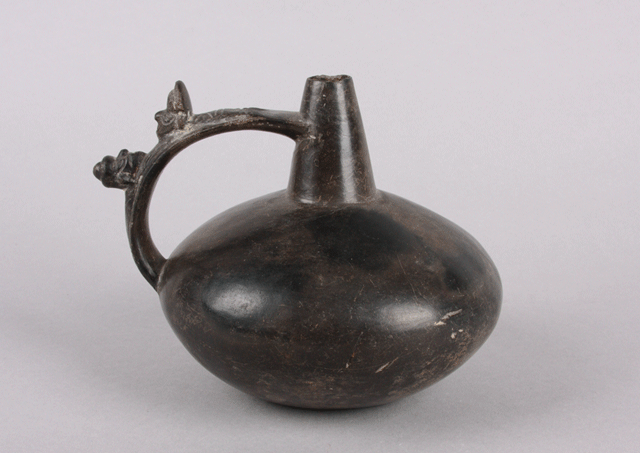
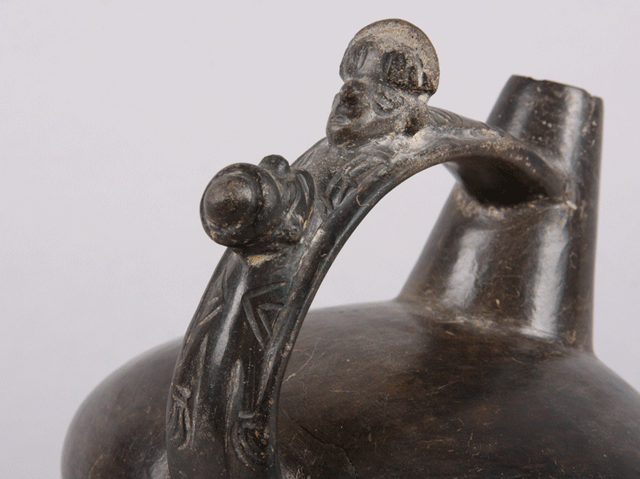
57.5.10, mold-made ceramic jar
Chimú, Lambayeque style (A.D. 1350–1470)
Gift of Mr. Wartt Stewart
To return to the thumbnail on the previous page, click
here.
All content copyright © Maxwell Museum of Anthropology, University of New Mexico. High-resolution versions of photographs may be ordered from the Maxwell Museum's photo archives. Please make note of the catalogue numbers. For more information please visit the photo archives web page
Page last revised on March 7, 2011. Please report problems to toh@unm.edu